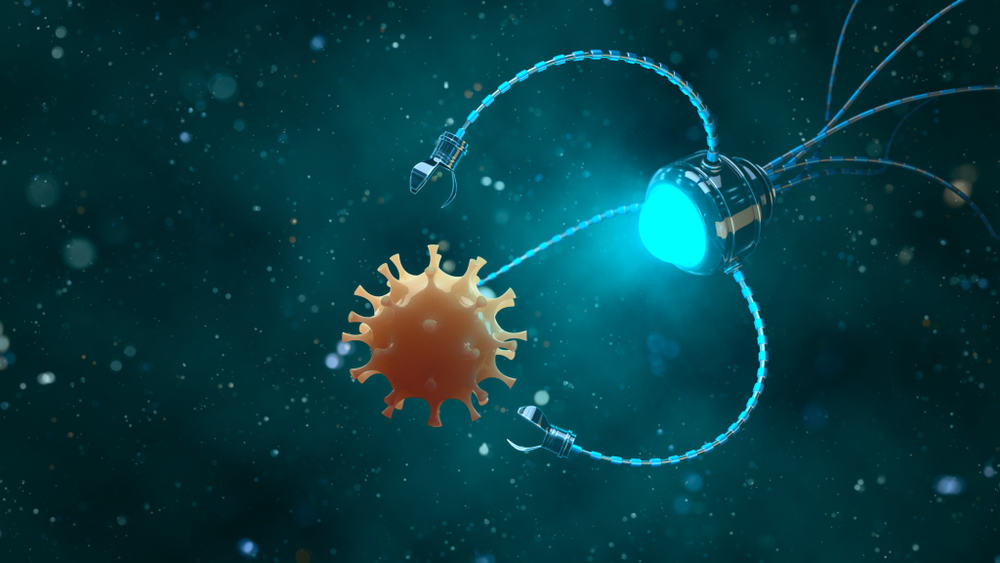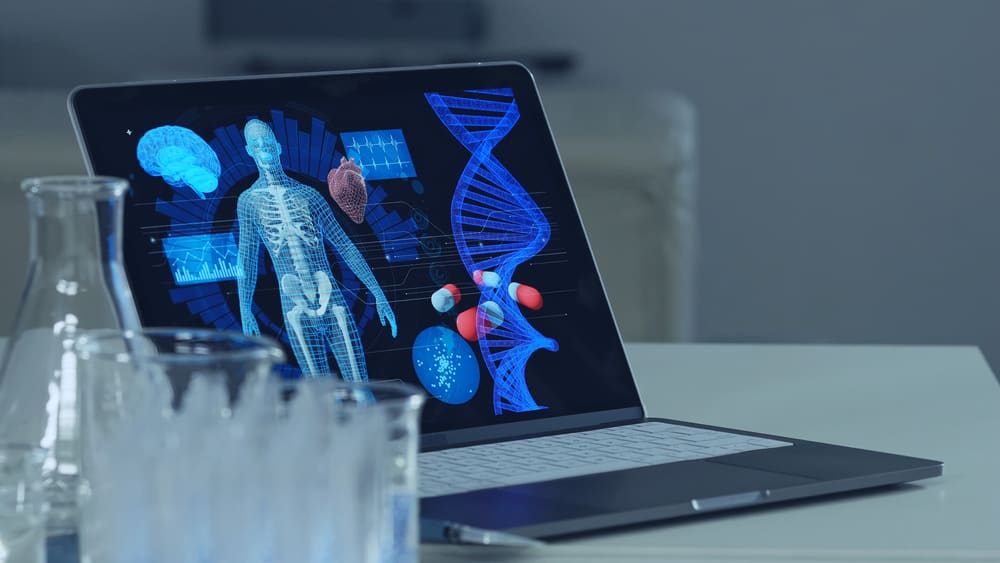
Dec 16, 2020
In the last few years, there have been great advances in the field of Regenerative Medicine and Stem Cell Therapy. These treatments hold a great deal of promise for the treatment of a variety of orthopedic conditions. Most treatments are offered at your convenience in a medical clinic setting without the need for surgery.
What is Regenerative Medicine?
Regenerative medicine is a multi-disciplinary field that aims to restore damaged or diseased tissues by utilizing the body’s own natural healing process. By bringing together many different disciplines such as cellular biology, genetics, and tissue engineering, Regenerative Medicine has revolutionized the way physicians can treat orthopedic conditions. Stimulating our body’s natural ability to heal and promote tissue regeneration has replaced many traditional treatment options such as steroid injections or surgery.
Stem Cell Therapy
According to the International Society for Stem Cell Research’s (ISSCR) president, Douglas Melton, “Stem cell science is rapidly transforming how we think about the future of medicine. The field is actively working to address how we facilitate getting potential therapies from the lab to the clinic.”
Stem cells have the ability to develop into many different types of cells in the body, which is why stem cell therapy is important in the field of regenerative medicine. There is constant advancement of research in the use of stem cell for replacement of damaged tissue or transplants, drug testing and development and regenerative medicine.
How are Stem Cell Therapy and Regenerative Medicine Related?
There is a direct connection to stem cell therapy and the practice of Regenerative Medicine which harnesses the body’s ability to heal itself and regrow tissues. The different types of stem cells, namely embryonic, adult, and induced pluripotent stem cells, are used in the field of developmental biology to study how cells behave. Stem cells are also used to test new to drugs for the treatment of various diseases and medical conditions. In the field of orthopedics, adult stem cells play a crucial role in the cell-based therapies used to treat orthopedic injuries such as knee osteoarthritis.
What Orthopedic Conditions Can Be Treated with Cell-Based Therapies?
- Knee pain due to osteoarthritis or meniscus tears
- Shoulder pain due to rotator cuff tendon tears or tendinitis
- Carpal Tunnel Syndrome
- Golfer’s Elbow and Tennis Elbow
- Sciatica
- Chronic ankle ligament sprains
- Low back pain due to disc degeneration or sacroiliac joint ligament injury
Regenerative medicine has entered the world of clinical practice thanks to quickly evolving technology and advancements in the understanding of how stem cells work in the body. As research continues, the field of Regenerative Medicine and stem cell therapy will continue to grow, providing doctors and their patients the ability to treat many conditions that were previously untreatable.
REFERENCES:
NCBI: Regenerative Medicine
UNMC: Stem Cells and Regenerative Medicine
International Society of Stem Cell Research: Stem Cell Therapies and Regenerative Medicine
California Stem Cell Agency: The Power of Stem Cells
American Association of Blood Banks: Regenerative Medicine

Nov 27, 2020
Regenerative treatments use the body’s own unique healing properties to alleviate painful orthopedic conditions and address the underlying cause of the pain.
Regenerative medicine has the potential to repair or replace tissues damaged by age, disease or trauma. It can be used to treat a number of orthopedic conditions including the following:
- Bursitis
- Carpal Tunnel Syndrome
- Disc Degeneration and Tears
- Golfer’s Elbow and Tennis Elbow
- Herniated Discs
- Osteoarthritis of the knees, hips, back, shoulders and neck
- Plantar Fasciitis
- Tendon Tears and Tendinitis
How Do Regenerative Treatments Work?
The body is a finely tuned machine. Like any piece of machinery, it will send a signal when something is not working correctly. When a gasket fails on an engine and leaks oil, this leak is a signal that there is a problem. In the same way, when a body part fails, the body sends a signal to indicate there is a problem. Typically, it does this through the sensation of pain.
Regenerative treatments use the patient’s own cells in the form of platelet rich plasma or healing cells derived from fat tissue or bone marrow, to heal the underlying cause of the pain. These cellular products are referred to as Orthobiologics.
How Do Orthobiologics Work?
- Platelet Rich Plasma: Platelets in the patient’s own blood release growth factors and proteins that promote tissue repair, while the plasma carries the hormones, electrolytes and nutrients required to nourish cells during the healing process.
- Cell Based Therapies: Healing cells taken from the patient’s own fat tissue (adipose) or bone marrow contain adult stem cells that have the unique ability to develop into the specific kind of cell needed by the body. They possess molecules that direct other cells in the injured area to form new blood vessels, awaken more stem cells and encourage production of proteins and other materials essential for creating new healthy tissues.
- Prolotherapy (Proliferative Therapy): Natural medications that help the body jump-start its own natural healing response are injected into the injured area.
Minimally Invasive Pain Relief for Orthopedic Conditions
Orthobiologic regenerative treatments are performed on an out-patient basis and do not require hospitalization or lengthy rehabilitation. The healing cells are obtained from the patient through a needle or small cannula and are returned to the injured site on the same day.
Experienced, reputable practitioners of regenerative medicine follow the U.S Food and Drug Administration (FDA) guidelines for the performance of these procedures and follow strict protocols to ensure safety and efficacy. Patients considering regenerative treatments should seek the expertise of board certified-physicians who are specialized in diagnosing and treating orthopedic conditions. They have the regenerative medicine skills and experience necessary to promote safety, comfort and a successful outcome.
Drs. Christopher J. Rogers and Mary A. Ambach of San Diego Orthobiologics Medical Group together have successfully treated thousands of patients with cell-based therapies for more than three decades. They are board-certified in Physical Medicine and Rehabilitation. As published authors and stem cell researchers, they were chosen to participate in a first of its kind, FDA-approved clinical trial to treat knee osteoarthritis. The SDOMG facility in Carlsbad contains the most advanced Regenerative Medicine technology in San Diego and offers same day treatments with the highest level of safety, efficacy and patient satisfaction.

Nov 6, 2020
The human spine is composed of 24 individual bones called the vertebrae. In between these bones are the intervertebral discs, which are gel filled structures that act as shock absorbers. They consist of a tough outer layer called the annulus fibrosus that protects the disc’s gel-like interior, the nucleus pulposus. In the lower back, the discs are a little more than a third of an inch (10 millimeters) thick and about 1.5 inches (four centimeters) in diameter.[i]
A bulging disc or herniated disc occurs when the outer layer of the disc weakens and tears. This can cause the inner gel to bulge out to the spinal canal and affect the nearby nerves causing back pain, leg pain or muscle spasm. The disc tear can also cause leakage of materials into the spinal canal that can cause inflammation and pain.
Herniated discs most often occur in the lower back but can occur anywhere in the spine, including the neck and the midback. The location of the herniated disc often determines where the patient will feel symptoms of pain, tingling, numbness or weakness. Bulging discs in the lumbar spine can result in pain in the low back, buttocks, thighs, legs and feet. On the other hand, if your herniated disc is in the cervical spine, pain can be felt in the neck, shoulders, arms and hands.
What Causes a Herniated Disc?
Disc herniation can occur due to injury or age-related wear and tear. As people age, the disc nucleus pulposus loses hydration, wears down and leads to degeneration. Other factors may increase the risk of developing a herniated disc. These include:
- Repetitive lifting, pulling, pushing, bending and twisting
- Genetics
- Increased height (tall people)
- Smoking (decreases blood supply to the disk leading to degeneration)
A thorough medical history and physical examination can lead to the diagnoses of disc herniation. An MRI of the spine is an imaging modality that reveals herniated discs and other structural abnormalities of the spine.
Treatment Options
The treatment for most cases of mild to moderate herniated discs involves conservative measures which include the following:
- Activity modification: Avoid repetitive twisting, bending or lifting. Do not sit or stand for extended periods of time.
- Physical therapy to strengthen your trunk, arm and leg muscles that support the spine.
- Medications: Anti-inflammatory medications such as ibuprofen or naproxen, muscle relaxers, or pain killers
- Ice packs or heating pads
- Alternative therapies such as acupuncture, massage or gentle chiropractic manual therapies to manage pain.
Non-Surgical Interventions
When conservative measures fail to provide symptomatic relief, a board-certified spine specialist can offer injection treatments that do not require hospitalization and provide a more rapid recovery than surgery.
Epidural corticosteroid injection is a treatment that delivers steroid, a powerful anti-inflammatory medication, directly to the source of pain. This is performed using fluoroscopic (x-ray) guidance. This treatment can provide immediate relief of pain. The number of treatments is limited as repetitive steroid use could result to tissue damage, hormonal irregularities, osteoporosis and decreased immune response.
Cell-based therapies can treat disc degeneration and tears that are traditionally managed with medications or surgery. These treatments have been shown to increase disc hydration and disc cell proliferation, decrease inflammation, increase disc support tissue and assist in tissue healing. These therapies involve obtaining the patient’s own healthy cells and delivering them to the injured disc where they can jump start the body’s own regenerative healing processes.
- Platelet Rich Plasma uses platelets in the blood that release growth factors and proteins to promote tissue repair, while the plasma carries the hormones, electrolytes and nutrients required to nourish cells during the healing process.
- Cell Based Therapies use cells derived from the patient’s own bone marrow. Bone marrow contain adult stem cells that have the unique ability to develop into the specific kind of cells, including anulus and nucleus pulposus cells. They also contain many other healing cells and molecules that direct other cells in the area to form new blood vessels, awaken stem cells and produce collagen or other proteins essential for creating healthy new tissue.
Patients considering regenerative treatments such as these cell therapies need to know that the U.S. Food and Drug Administration (FDA) does not currently allow the use of stem cells derived from birth tissue products such as amniotic fluid or umbilical cord blood to treat orthopedic conditions. These donor products do not contain live stem cells and have not been tested for safety or efficacy.
Candidates for Cell-Based Therapies for Herniated Discs
The success of cell-based treatments for herniated discs is dependent upon the severity of your condition and your overall health. Cell-based treatments are not suitable for those who have active cancer, infection, history of blood disease, or are pregnant.
Cell-based therapies are giving new hope for long-lasting pain relief to many patients with injured discs. It is important that you take an active role in your healing and recovery with good nutrition and a commitment to overall fitness to achieve the best outcome.
Drs. Christopher J. Rogers and Mary A. Ambach of San Diego Orthobiologics Medical Group together have successfully treated thousands of patients with interventional spine procedures and cell-based treatments for more than three decades. They are published authors and cell therapy researchers. Their facility in Carlsbad contains the most advanced Regenerative Medicine technology in San Diego and offers same- day treatments with the highest level of safety and efficacy.
[i] https://www.kenhub.com/en/library/anatomy/the-intervertebral-discs
https://www.mayoclinic.org/diseases-conditions/herniated-disk/symptoms-causes/syc-20354095

Oct 23, 2020
Regenerative medicine represents a complete breakthrough in modern medicine. The body’s ability to heal itself naturally is actually not a new thing. A fractured bone will regrow and heal the break. Cut yourself shaving, and the skin will heal. There are many examples of our body’s innate ability to heal injuries.
Now modern science and technology are now enabling physicians to help their patients discover new ways in which the body can heal itself. Within the specialty of orthopedics, regenerative medicine is offering healing and pain relief to patients who suffer from conditions such as osteoarthritis, herniated discs or ligaments and tendons injuries.
Orthobiologics Can Boost the Body’s Own Natural Healing Abilities
Orthobiologics are cells and substances derived from cells that are naturally found in your body. By concentrating them and delivering them to the site of injury, they can help speed up the healing process.
Here’s how it works:
When you injure a bone, muscle or tendon, the platelet cells in the blood are the first responders arriving on the scene to quickly start healing. White blood cells also rush to the injury site to ward off infection, control inflammation and become the clean-up crew [i]. Other important cells like stem cells participate in this complex symphony of repair. Specialists in orthopedic regenerative medicine can now boost these natural processes through several specialized treatments that help maximize the body’s own innate healing capabilities.
Regenerative Treatments for Orthopedic Conditions
There are different orthobiologic treatments that your regenerative medicine specialist can recommend depending on your orthopedic condition:
· Platelet Rich Plasma puts the healing properties of the patient’s own blood to work to repair damaged joints, tendons and muscles. The platelets in the blood release growth factors and proteins that promote tissue repair, while the plasma carries the hormones, electrolytes and nutrients required to nourish cells during the healing process. PRP treatments are customized to the particular individual and their injury in order to be most effective.
· Cell based therapies use cells derived from the patient’s own bone marrow or adipose (fat) tissue. These cells include adult stem cells and many other healing cells. They produce molecules that direct neighboring cells in the area to form new blood vessels, decrease inflammation and encourage formation of new healthy tissues. Stem cells are special cells that have the unique ability to develop into the specific kind of cell needed, whether that be a tendon, ligament, cartilage or bone cell. Skilled regenerative medicine practitioners use highly specialized processes to prepare these cells that are then delivered directly to the injured area to stimulate healing.
· Prolotherapy (Proliferative Therapy) uses dextrose and other natural substances that are injected into a chronically injured ligament, tendon, nerves or joint in order to help the body jump-start its own natural healing response.
Beware of Imposters
As regenerative treatments have become more widely recognized for their ability to address orthopedic conditions and the chronic pain associated with it, more and more clinics are trying to get in on the action.
If you are considering regenerative treatments for pain related to osteoarthritis, tennis elbow, degenerative discs in the spine or other conditions, you should perform due diligence on the clinic that offers it. The source, processing and delivery of the regenerative materials are critical to the success of the treatment.
Currently, the U.S. Food and Drug Administration (FDA) does not allow the use of stem cells derived from birth tissue products (amniotic fluid and tissue, umbilical cord blood) to treat orthopedic conditions because these donor products have not been proven to be safe or effective. Our board-certified specialists only use your own cells (autologous) to treat orthopedic conditions.
Maximizing the effectiveness of these treatments requires a state-of-the-art facility and equipment, as well as knowledge and experience in fluoroscopic (x-ray) or ultrasound guidance to ensure targeted delivery of the healing cells to the injured area.
Orthobiologic treatments that capitalize on the body’s own natural healing abilities is one of the most exciting opportunities in modern medicine to address and resolve the chronic pain associated with orthopedic conditions that affects millions of Americans.
Drs. Christopher J. Rogers and Mary A. Ambach of San Diego Orthobiologics Medical Group together have successfully treated thousands of patients with cell based therapies for more than three decades. They are published authors and cell therapy researchers. Their facility in Carlsbad contains the most advanced Regenerative Medicine technology in San Diego and offers same day treatments with the highest level of safety and efficacy.
[i] https://www.aarp.org/health/alternative-medicine/info-11-2008/super_healing.html
[ii] https://orthoinfo.aaos.org/en/treatment/helping-fractures-heal-orthobiologics/

Oct 2, 2020
According to the U.S. Centers for Disease Control, an estimated 1 in 5 Americans, more than 50 million people, suffer from chronic pain. And, 20 million of these people suffer from pain that interferes with their lives every day.[i] Advances in medicine provide new hope to those living with chronic pain. Orthobiologics are products derived from your own cells and substances derived from those cells that are found naturally throughout the body. They can be used to treat orthopedic conditions and in many cases, avoid the need for surgery. [ii]
Scientific evidence from years of research have shown that Orthobiologic therapies that use your own cells, such as Platelet Rich Plasma (PRP) bring long-term pain relief and at the same time reduce degeneration and stimulate tissue healing.
Which conditions can be treated with Orthobiologics?
- Joint pain due to osteoarthritis or meniscus tears
- Shoulder pain due to rotator cuff tendon tears or tendinitis
- Carpal Tunnel Syndrome
- Golfer’s Elbow and Tennis Elbow
- Sciatica
- Chronic ankle ligament sprains
- Low back pain due to degenerative discs or sacroiliac joint ligament injuries
The severity of injury as well as the patient’s overall health will influence the treatment’s ability to resolve these painful conditions.
How do Orthobiologics Work?
Stem cell therapies and platelet rich plasma (PRP) treatment offer unique healing capabilities.
Adult Stem Cells can be obtained from your own adipose tissue (fat) or bone marrow and produce molecules that directly form new blood vessels, reduce inflammation and encourage tissue healing. The adipose and bone marrow tissues are obtained from the patient in the clinic with local anesthetic, prepared in a lab, and then injected into the anesthetized injury site.
Platelet Rich Plasma (PRP) use platelet cells from your own blood to reduce inflammation and stimulate healing. Plasma, the fluid part of blood, contains hormones, electrolytes and nutrients that nourish cells during the healing process. Platelets are cells that release growth factors and proteins that promote tissue repair.
How to find the best doctor for you:
With more and more medical clinics offering cell based therapies, it is important to ask specific questions and demand specific answers about how these treatments are performed.
Ask your doctor these important questions:
- Which products do you use? The US Food and Drug Administration (FDA) allows the use of your own cells and tissues that are minimally manipulated for orthopedic conditions. Commonly used tissues include your own blood, fat or bone marrow. Donor-derived products, such as birth tissues (e.g. umbilical cord blood, amniotic fluid, placenta and exosomes) have not been proven to be safe or effective and are not permitted by the FDA for use in the United States.
- Are you licensed to treat my medical condition? Orthopedic conditions are typically managed by board-certified orthopedic surgeons, physical medicine physicians, fellowship trained sports medicine physicians or pain management physicians. Chiropractors, naturopaths and primary care physicians without specialized training are not trained to diagnosis or manage these types of medical conditions.
- Does your clinic use the proper lab equipment designed to provide customized same-day treatments? The more advanced physicians who offer orthobiologic therapy can produce a variety of types of therapy, prepared with the highest standards of lab practice.
- Are the treatments customized to my specific medical condition? Every person is unique and the treatment must be customized to fit your condition.
- Do you use image guidance with x-ray or ultrasound to inject the orthobiologics into the correct tissues? Fellowship trained physicians have advanced training in the proper use of image guidance to ensure safety, efficacy and comfort.
- Do you track your patient outcomes in a data registry or participate in clinical trials?
- Do you publish scientific papers in the peer-reviewed medical journals?
When patients do their homework and ask the right questions they will find the best healthcare provider for their specific needs. They will learn that orthobiologics can treat chronic orthopedic conditions without the need for major orthopedic surgery, enjoy a quick recovery and regain the quality of life that they deserve.
Drs. Christopher J. Rogers and Mary A. Ambach of San Diego Orthobiologics Medical Group together have successfully treated thousands of patients with cell-based therapies for more than three decades. They are published authors and stem cell researchers. The SDOMG facility in Carlsbad contains the most advanced Regenerative Medicine technology in San Diego and offers same day treatments with the highest level of safety, efficacy and patient satisfaction.
[i] https://www.cdc.gov/mmwr/volumes/67/wr/mm6736a2.htm#:~:text=An%20estimated%2020.4%25%20(50.0%20million,adults%2C%20adults%20living%20in%20poverty%2C
[ii] https://www.ncbi.nlm.nih.gov/pmc/articles/PMC3931137/#:~:text=%E2%80%9COrthobiologics%E2%80%9D%2C%20refers%20to%20the,are%20naturally%20found%20in%20body




